Debra H. Goldstein's Blog, page 15
January 12, 2022
Say it with Flowers
“I can’t believe Daisy is gone.” Officer Monroe stared at the picture in his hand, a crime scene photo of the deceased holding a fistful of Blue Bell flowers. “When I patrolled, she was always the first to say good-morning to me.”
The post Say it with Flowers appeared first on Debra H. Goldstein.
January 3, 2022
How Did a Mystery Writer End up in IT? by Heather Weidner
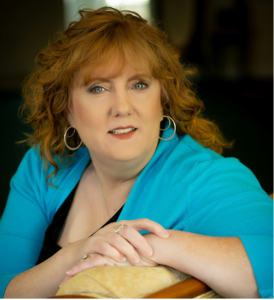 I have been a mystery fan since Scooby-Doo and Nancy Drew. I’m a 70s kid, and my Saturday ritual was overly sugared cereal and hours of mystery cartoons. Scooby-Doo, The Funky Phantom, Josie and the Pussycats, Jabber Jaw, and so many others helped me realize that ordinary people (usually kids) could solve crimes that sometimes the adults couldn’t. And then there were the super heroes to championed truth and justice and always fought for the underdog. (I wanted to be Batgirl.) All of these characters and stories were a gateway to Nancy Drew, the Hardy Boys, Agatha Christie, Alfred Hitchcock, Two-minute Mysteries, and many more. Reading opened up so many amazing worlds.
I have been a mystery fan since Scooby-Doo and Nancy Drew. I’m a 70s kid, and my Saturday ritual was overly sugared cereal and hours of mystery cartoons. Scooby-Doo, The Funky Phantom, Josie and the Pussycats, Jabber Jaw, and so many others helped me realize that ordinary people (usually kids) could solve crimes that sometimes the adults couldn’t. And then there were the super heroes to championed truth and justice and always fought for the underdog. (I wanted to be Batgirl.) All of these characters and stories were a gateway to Nancy Drew, the Hardy Boys, Agatha Christie, Alfred Hitchcock, Two-minute Mysteries, and many more. Reading opened up so many amazing worlds.
My love for reading turned into two degrees in American literature and eventually, a twenty-plus year career in IT. Yes, I am an English major who is an IT and Governance Manager. They seem like such opposite ends of the spectrum, and when people learn about my background (and that I also write mystery novels) there is always a quizzical look on their faces. How did an English major end up in IT?
[image error]My first real job after college was as a technical writer (translating technology to business users) at about the time the internet exploded. Everyone needed content for websites, blogs, wikis, and training materials. It was a natural fit. The IT technicians and engineers also needed someone to translate key concepts and processes into every-day language. I found that as I documented software and processes, I was really good at finding defects, much to the chagrin of the project managers. (The goal is to find defects early in the project and not at the end stages when training and documentation are happening.) I eventually shifted to software testing and channeled my inner Nancy Drew every day to uncover defects and to figure out why something was behaving the way it did. Sometimes, it was just a puzzle with a missing piece, and other times, a giant mystery with way too many suspects and red herrings.
I am fascinated by puzzles, and really, that’s all that IT is. Technology is a tool set like Batman’s utility belt, Wonder Woman’s lasso, or Green Lantern’s ring. We help our business users find solutions to problems or easier ways to do things. We also ferret out defects and find root causes for problems. Technology is such an integral part of everyone’s life now, and a large part of the IT focus has shifted to protecting our assets from attacks. Superheroes come in all shapes and sizes, including our security engineers who are ever vigilant with their constant efforts to fend off the bad actors.
So, I would argue that my love for technology (and all things geeky) and reading and writing mysteries aren’t really polar opposites. In my own tiny way, I did get to be one of those meddling kids who unmasks the problem and solves the mystery.
BiographyThrough the years, Heather Weidner has been a cop’s kid, technical writer, editor, college professor, software tester, and IT manager. Vintage Trailers and Blackmailers is the first in her cozy mystery series, the Jules Keene Glamping Mysteries. She also writes the Delanie Fitzgerald mystery series set in Virginia.
Her short stories appear in the Virginia is for Mysteries series, 50 Shades of Cabernet, Deadly Southern Charm, and Murder by the Glass, and her novellas appear in The Mutt Mysteries series.
Originally from Virginia Beach, Heather has been a mystery fan since Scooby-Doo and Nancy Drew. She lives in Central Virginia with her husband and a pair of Jack Russell terriers.
Website and Blog: http://www.heatherweidner.com
Twitter: https://twitter.com/HeatherWeidner1
Facebook: https://www.facebook.com/HeatherWeidnerAuthor
Instagram: https://www.instagram.com/heather_mystery_writer/
Amazon: https://www.amazon.com/dp/B09GGBFWT5
Amazon: https://www.amazon.com/Vintage-Trailers-Blackmailers-Heather-Weidner/dp/1685120369
Barnes and Noble: Vintage Trailers and Blackmailers by Heather Weidner, Paperback | Barnes & Noble® (barnesandnoble.com)
There is nothing like finding a dead body, clad only in a red satin thong, on your property to jolt you from a quiet routine. Jules Keene, owner of the posh Fern Valley Camping Resort in the Blue Ridge Mountains, is thrust into the world of the Dark Web when one of her guests, Ira Perkins, is found murdered in the woods near her vintage trailers. Jules quickly discovers that the man who claimed to be on a writing retreat was not what he seemed, and someone will go to any length to find what he left at her resort. Jules, along with her Jack Russell Terrier sidekick Bijou, has to put the rest of the missing pieces of a blackmailing scheme together before her business is ruined.
Jules’s resort, set in the heart of Virginia’s Blue Ridge Mountains near Charlottesville in the quaint town of Fern Valley, offers guests a unique vacation in refurbished and upcycled vintage trailers. Hoping to expand her offerings, she partners with her maintenance/security guy to create a village of tiny houses, the latest home DIY craze, but a second murder of a reporter interrupts Jules’s expansion plans. Curiosity gets the best of her, and she steps up her sleuthing to find out what Ira Perkins was really up to and what he was really hiding at her resort.
The post How Did a Mystery Writer End up in IT? by Heather Weidner appeared first on Debra H. Goldstein.
November 21, 2021
For the Fun of It by Marilyn Levinson/Allison Brook
 Reading cozy mysteries is fun, writing them even more fun because I get to create a world to my liking filled with characters I’ve grown to love. My Haunted Library mystery series takes place in Clover Ridge, Connecticut. The library is housed in a centuries-old building facing the town Green. There’s a library ghost— Evelyn Havers, who used to work in the Clover Ridge Library—and a library cat named Smoky Joe, as well as all sorts of mysteries for my sleuth, Carrie Singleton, to solve.
Reading cozy mysteries is fun, writing them even more fun because I get to create a world to my liking filled with characters I’ve grown to love. My Haunted Library mystery series takes place in Clover Ridge, Connecticut. The library is housed in a centuries-old building facing the town Green. There’s a library ghost— Evelyn Havers, who used to work in the Clover Ridge Library—and a library cat named Smoky Joe, as well as all sorts of mysteries for my sleuth, Carrie Singleton, to solve.
Over the course of the series Carrie changes from Goth Girl to the responsible head of programs and events at the Clover Ridge Library, developing close relationships as she investigates homicides. What I love about writing a series is that Carrie and her friends and relatives appear in every book. And what a busy bunch they are! Their activities and adventures carry me from one book to another so I am never at a loss for storylines. No need to ever have to wonder: “Hmm, what shall I write about next?” My characters lead the way!
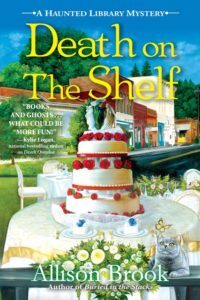 Each book in my Haunted Library series has a theme, and the theme of DEATH ON THE SHELF, the fifth book in the series, is love and marriage and aptly takes place in June. Angela Vecchio, Carrie’s best friend, is getting married. Angela is worried that her brother Tommy, who’s currently in Clover Ridge from California where he produces movies, will ruin her wedding. Tommy has a bad temper and tormented Angela when they were younger, something their parents never believed. Now Tommy’s going around asking friends and family members to invest in his new movie. When a relative is murdered, Angela wonders if her brother killed him because he’d turned Tommy down.
Each book in my Haunted Library series has a theme, and the theme of DEATH ON THE SHELF, the fifth book in the series, is love and marriage and aptly takes place in June. Angela Vecchio, Carrie’s best friend, is getting married. Angela is worried that her brother Tommy, who’s currently in Clover Ridge from California where he produces movies, will ruin her wedding. Tommy has a bad temper and tormented Angela when they were younger, something their parents never believed. Now Tommy’s going around asking friends and family members to invest in his new movie. When a relative is murdered, Angela wonders if her brother killed him because he’d turned Tommy down.
What fun it was to create Donna and Roxy, Angela’s beautiful and sophisticated cousins who are best friends when they’re not competing with each other. Growing up, Angela always felt insecure in her older cousins’ company. She wishes Donna and Roxy weren’t involved in her bridal shower. But when they offer to host the shower in Donna’s drop-dead-gorgous house after learning that the restaurant where the shower was supposed to be burned down, there’s nothing Angela can do but graciously accept. Both her cousins have married doctors and are financially secure, but now Roxy is divorced and seems to have grown attached to Donna’s husband. Will Donna put up with her cousin’s behavior?
While Donna and Roxy’s ventures into love and marriage may not have happy endings, conjugal bliss is in store for Carrie’s father who, after a life of crime, has settled into a job he enjoys and has found a woman he loves. As for Carrie and Dylan, their romantic path takes a new turn at the end of DEATH ON THE SHELF.
Cozies have their share of murder and intrigue, but their tone is considerably lighter than that of more traditional mysteries. This allows me plenty of leeway when setting the scene that exposes the murderer. At the end of CHECKED OUT FOR MURDER, Carrie stalks a pair of suspects and is more shocked by their relationship than what they reveal about the murders—but you’ll have to read the book to find out.
A former Spanish teacher, Marilyn Levinson writes mysteries, romantic suspense, and novels for kids. Her books have received many accolades. As Allison Brook she writes the Haunted Library series. DEATH OVERDUE, the first in the series, was an Agatha nominee for Best Contemporary Novel in 2018. Other mysteries include the Golden Age of Mystery Book Club series and the Twin Lakes series.
Her juvenile novel, Rufus and Magic Run Amok, was an International Reading Association-Children’s Book Council Children’s Choice. And Don’t Bring Jeremy was a nominee for six state awards.
Marilyn lives on Long Island, where many of her books take place. She loves traveling, reading, doing crossword puzzles and Sudoku, and chatting on FaceTime with her grandkids.
Buy link: https://bit.ly/36OkDrG
The post For the Fun of It by Marilyn Levinson/Allison Brook appeared first on Debra H. Goldstein.
November 8, 2021
Blessed Be the Little Children
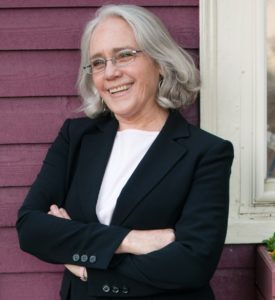 Thanks for inviting me over, Debra, to help celebrate the release of Murder at the Lobstah Shack at the end of this month!
Thanks for inviting me over, Debra, to help celebrate the release of Murder at the Lobstah Shack at the end of this month!
I love little kids. I know you are a new grandma, Debra. I’m not one yet, although I’m eager to be. In the meantime, I’m close to my goddaughter’s little ones, a four-year-old pistol of a girl and her baby brother, now four months old.
 One-week-old baby feet and big sister hands
One-week-old baby feet and big sister handsSo, when I was designing my Cozy Capers Book Group Mysteries series a few years ago, it came to me that protagonist Mac Almeida’s brother Derrick would be a single father of a little girl named Coquille, whom everyone in Westham calls Cokey. Here’s a bit of backstory from the new book:
Cokey’s mother had taken her to France to live as a newborn. She and Derrick had been a couple but hadn’t married, and he couldn’t legally prevent her from moving abroad with the baby. When my niece turned three, her mother asked Derrick to come and get their daughter. After that, she basically dropped communications. Our parents stepped in to help—Cokey stayed with Mom or Pa most afternoons—and the girl was a resilient little beam of sunshine nearly all the time. But sadness at not being with her Maman popped up from time to time.
[image error]Sadly, the victim in Murder at the Lobstah Shack is the mother of one of Cokey’s best friends. Mac knows Cokey realizing Kendall is now motherless would remind her of her own mother’s abandonment.
At Mac’s Bikes not long after the death, Derrick brings in a drawing Cokey made for her friend.
Cokey’s picture showed two big smiling balloon heads with legs and hands sticking out from each. One head had yellow hair and the other brown, and the two girls were holding hands. Cokey had signed it with her beginner capital letters, including the E facing backwards.
Here’s another bit from when Cokey is helping Mac stock the shelves of the Free Food Market for the needy in town.
Cokey’s blond angel curls were in two tiny braids today, with wavy wisps that popped out everywhere. “The children are going to be happy with juice boxes for their lunches, aren’t they, Titi Mac?” she lisped.
“You bet.” I reached down and held up my hand for a high five. “Nice job stocking, Cokester.”
She slapped it with her little hand. “Nice job with the peppers.”
“I’m sorry about your friend’s mommy,” I said. “Daddy showed me the picture you drew. That was really nice.”
“He taked it to her mailbox,” Cokey said with a solemn look. “It’ll make her feel better.”
Cokey has become one of my favorite characters. She even plays a part in helping crack the case in the book. Her coloring is different than my sweet Miss C’s, but they are the same age.
[image error]Readers: who is your favorite fictional – or real – child? I’ll send one commenter a copy of Murder at the Taffy Shop, the previous book in the series so you’ll be ready for the November 30 release of the new one!
In Murder at the Lobstah Shack, Tulia Peters’ Lobstah Shack offers locals and tourists in Westham, [image error]Massachusetts, some of Cape Cod’s most delectable cuisine. But when the body of Annette DiCicero is discovered in the kitchen’s walk-in freezer—with a custom-made claw-handled lobster pick lodged in her neck—spoiled appetites are the least of Tulia’s worries. After a heated public argument with Annette, Tulia is a person of interest in the homicide investigation. To clear Tulia’s name, Mac and the Cozy Capers Book Group snoop into Annette’s personal life. Between Annette’s temperamental husband, his shady business partner, and two women tied to Annette’s past life as “Miss New Bedford”, several suspects and multiple motives emerge. And they’re getting crabby about Mac intruding on their affairs.
Maddie Day pens the bestselling Country Store Mysteries and Cozy Capers Book Group Mysteries. As Edith Maxwell, she writes the Agatha Award-winning Quaker Midwife Mysteries and short crime fiction. She’s a lifetime member of Sisters in Crime and a member of Mystery Writers of America, and lives north of Boston with her beau, where she cooks, gardens, and wastes time on Facebook.
If you’d like an autographed copy of any of her books, please order it from Jabberwocky Books and she’ll run over and sign a copy for you. Murder at the Lobstah Shack is also available wherever else books are sold, including here.
Find Edith and Maddie at their web site, at Wicked Authors, at Mystery Lovers Kitchen on the second and fourth Fridays, and on social media under both names.
Facebook:
Maddie Day Author
Instagram:
Maddie Day Author
Twitter:
Edith Maxwell and Maddie Day Author
The post Blessed Be the Little Children appeared first on Debra H. Goldstein.
October 25, 2021
My Mother’s Slippers
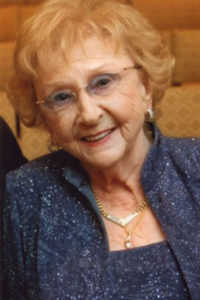 In November, I think about my mother. She was a driving force in my life until her unexpected death in November 2014. There are still times when I want to pick up the phone and share good news with her or ask for her advice, but I can’t. What I can do is keep a part of her with me – her slippers.
In November, I think about my mother. She was a driving force in my life until her unexpected death in November 2014. There are still times when I want to pick up the phone and share good news with her or ask for her advice, but I can’t. What I can do is keep a part of her with me – her slippers.
Not the pair she wore, but one of twenty or thirty pairs of the identical slippers that she hoarded. My mother was an atypical hoarder. Everything in her house was always perfectly in place and her kitchen floor was so clean that one could eat off of it. Newspapers and magazines were thrown out once read; finished books, except for ones I wrote, were loaned to friends, or donated; and clothes were stylish but took up no more than a closet.
Her hoarding fetish involved shoes. She loved them. Because she had a hard to fit foot (super narrow and only a six or six and one-half), if she found a pair of shoes to fit, she bought them — in every color. If she found something she loved was going to be discontinued, she stocked up on them. The thing about my mother was that she wore all of those shoes. Each one matched an outfit or a mood and while she kept them carefully boxed on shelves in her closet, she believed in wearing and enjoying them.
 After she died, my sister and I relished the memory of her cute outfits and her shoes. I was only saddened by the fact that while we had the same shoe size, our feet were just different enough that the last that fit her didn’t work for me. What did work were her slippers. She had found a pair of step-in flower-patterned slippers that she loved because they were narrow enough to stay on and soft enough not to rub her foot. She wore that particular brand for years and when she discovered they were being discontinued, she bought up every pair she could find. When she passed away, there were twenty plus pairs that had never been worn. I tried one on and they were perfect. Although I didn’t take them all, I brought several pairs home with me. Seven years later, morning or night, I think of my mother as I step into a pair of her slippers. The wonderful thing is that I know she will still be with me for years to come because of the ones I have yet to begin using.
After she died, my sister and I relished the memory of her cute outfits and her shoes. I was only saddened by the fact that while we had the same shoe size, our feet were just different enough that the last that fit her didn’t work for me. What did work were her slippers. She had found a pair of step-in flower-patterned slippers that she loved because they were narrow enough to stay on and soft enough not to rub her foot. She wore that particular brand for years and when she discovered they were being discontinued, she bought up every pair she could find. When she passed away, there were twenty plus pairs that had never been worn. I tried one on and they were perfect. Although I didn’t take them all, I brought several pairs home with me. Seven years later, morning or night, I think of my mother as I step into a pair of her slippers. The wonderful thing is that I know she will still be with me for years to come because of the ones I have yet to begin using.
Do you have anything passed down from a parent that reminds you of them regularly or that you have that may give someone continuing memories of you? Tell me about it for a chance to win an e-book of One Taste Too Many, the first in the Sarah Blair series.
The post My Mother’s Slippers appeared first on Debra H. Goldstein.
October 11, 2021
Variety in Writing
[image error]The below blog was a combination of an assignment given to me by my Hi-Lo writing coach (a Hi-Lo series is for struggling readers in K-12 grade levels meaning high-interest, low readability). I was tasked to write anything tongue-in-cheek with a tad of sarcasm while also keeping it real. I decided to combine this assignment with this blog post—I love writing that works on multiple levels! At this point, we aren’t looking for readability level—just content on if it’s tongue-in-cheek enough. I’ll let all of you decide!
Written word keeping time
Always meant to unwind
Taken aback from his last breath
Dread it all—if I have to, I MUST say Death.
Any of you may read the above and call it a poem, a joke, philosophy, fortune cookie fortune, wisdom, cynicism, meditative chant turned wrong, comedy, drama, or tragedy. I mean, it all is determined by your background, your outlook on life, as well as all those no-no topics we try to stay away from (i.e., politics, religion, race—that which divides us unlike our humanity unites us—I digress as that leans too left—being a little too like Kennedyesque—insert winky-face emoji here for the youth).
See what I did there? Words can do many things and evoke many emotions and reactions. Some of you may have felt a pull within finding some of that written word offensive—it hit home to you and created anger or even a red-colored fury to rise within your pupils. While others may be sitting tongue-in-cheek with that smart-alec-y grin pasted on your faces (like Fiona Apple much?) Others could be grumbling, “Don’t quit your day job, lady!” as they click the X mark to close this . . . (“they are gone,” she says, staring straight into the darkness –“CUT End Scene!” cried the panicked director glancing furiously at his watch making sure they don’t go overtime again! It will be his job this time, and he can’t afford that. Not with the child support he owes to four wives, the five debts he carries, and the cool five grand he just lost on that last horse race—how could he have known Lucky 7 was full-on irony—no, really, it was a horse called Full On Irony).
See what I did there? I took you on another trip through a tunnel of thoughts and imagery with words. Some people wonder what I write. That title up there. The one in the
Center margin
Variety—that’s what I write. Educational blogs, articles, books—working on a K-12 book on teaching writing for a press while also writing a Hi-Lo series while working on culinary cozy series and psych thriller script—my first time learning the full ins-and-outs of screenwriting—I’m about eight months in and I’m still stumped—everyone pray, chant, meditate, or nothing for me—that is serious—not sarcastic—I don’t judge—whoever, whatever, nothing you believe is great with me—as long as you find peace and happiness.
Here’s hoping some of you enjoyed the tunnel of my writing mind!
Writing to Market
What do I write? Is that the right question? Why do I write? That seems good. Waxing philosophical. How do I write? Hmmm… so the chicken does come before the egg. I knew it all along.
I hope this audience loves cheezy (as in Cheez-Its) jokes—if not, then maybe something a bit darker—moodier even. Light from the sunrays bore down into her Vantablackiest of souls. This cast the neon creature from her cells into motion causing a disco ball of lights bouncing throughout her now soothing, comforting soul. Wow-that turned from dark to light mood ring colors immediately.
Now, that’s what I call A Variety in Writing.
A Little About Me:
Moving into her second decade working in education, Jodi Rath has decided to begin a life of crime in her The Cast Iron Skillet Mystery Series. Her passion for mysteries and education led her to combine the two to create her business MYS ED. She splits her time working as an adjunct for Ohio teachers and creating mischief in her fictional writing. She currently resides in a small, cozy village in Ohio with her husband and her eight cats. Learn more at https://www.jodirath.com/.
Punkin Strudel Mayhem – The Cast Iron Skillet Mystery Series
It is a Spooktacular time for Jolie and Ava as they have their hands’ full catering Leavensport’s annual Halloween Pumpkin Bash. When Ava convinces Jolie to get their fortunes told by a visiting psychic, they receive an ominous prediction.
“Masks–literal and figurative, chaos, deceit, betrayal, death. The cards have spoken.”
Madame Esme Emerald’s fortunes are looking more like premonitions of doom. It seems that someone in Leavensport received a reading that did not sit well because Madame Emerald is found dead, and it looks like her crystal ball is the murder weapon—or is something more supernatural going on?
Bounty-Full Investigative Services is on the case, or is it more of a paranormal manifestation? This could be a first for the girls as they take on the underworld’s spirits.
Welcome to Leavensport, Ohio, where DEATH takes a DELICIOUS turn!
Release Date: 10/29/21
Links to purchase book:
Amazon: https://www.amazon.com/Punkin-Strudel-Mayhem-Skillet-Mystery-ebook/dp/B08MBGVFQS/ref=pd_sim_2?pd_rd_w=nucXg&pf_rd_p=495b84a8-4624-4096-8e20-27b4882c0d09&pf_rd_r=FYMV6E8G1VGTBVXBGA59&pd_rd_r=9ea3e9cd-0eb9-4e35-b6d0-2daea43525a4&pd_rd_wg=sfUAK&pd_rd_i=B08MBGVFQS&psc=1
All other e-platforms: https://books2read.com/u/mZaL15
FB Author page: @authorjodirath or https://www.facebook.com/authorjodirath/
Twitter: @jodirath
Bookbub: https://www.bookbub.com/profile/jodi-rath
Goodreads: https://www.goodreads.com/author/dashboard
The post Variety in Writing appeared first on Debra H. Goldstein.
September 26, 2021
Guest Blogger: Lois Winston – The Non-conforming Tropist
I’ve hit double-digits! October 4th will see the release of Stitch, Bake Die!, #10 in my Anastasia Pollack Crafting Mystery Series, currently available for pre-order from all the usual suspects. Given that when I started writing {{cough! cough!}} years ago, I expected a career in the romance genre and did briefly have one, this is a remarkable milestone. Never in my wildest imagination did I envision killing people for a living (only on paper, of course!) Now, that’s my happy place.
However, here’s what’s even more interesting: When I was asked to try my hand at writing a series with an amateur sleuth who was a crafter, I had no idea there were certain tropes I was expected to follow. Apparently, neither did my publisher, which in retrospect is quite odd for a publisher of cozy mysteries. For instance, they didn’t bat an eye when my Mafia bad guys used language appropriate to Mafia bad guys.
I’ve never used 4-letter words simply for shock value, and I really dislike when other writers do so. However, I’ve known some Mafia guys (another blog for another time), and I can assure you, they don’t go around saying, “Gosh darn it” and “Golly, gee whiz.”
Since I was never asked to omit the expletives during the editing process, I was shocked at some of the reader blowback I received for even the mildest of 4-letter words, like the H-E-double-hockey-sticks one or the word that’s a homophone for a structure that holds back water on a river.
I’ve learned many lessons as I’ve gotten older, one of which is that it’s best to choose your battles. When people write to you saying, “I loved your book, but I won’t read another unless you promise you’ll never again use curse words,” it gives you pause. Did I really want to lose readers for the sake of authenticity in certain dialog scenes?
The answer was no. At the end of my 3-book contract, the publisher and I couldn’t come to terms on further titles in the series or a second series they wanted. When I received my rights back, I revised the books to remove the objectionable words, making them conform more to cozy reader expectations. Ten books and three novellas into the Anastasia Pollack Crafting Mystery Series, I’m now well-versed in cozy tropes and the fine art of euphemisms.
~~~
USA Today and Amazon bestselling and award-winning author Lois Winston writes mystery, romance, romantic suspense, chick lit, women’s fiction, children’s chapter books, and nonfiction under her own name and her Emma Carlyle pen name. Kirkus Reviews dubbed her critically acclaimed Anastasia Pollack Crafting Mystery series, “North Jersey’s more mature answer to Stephanie Plum.” In addition, Lois is a former literary agent and an award-winning craft and needlework designer who often draws much of her source material for both her characters and plots from her experiences in the crafts industry. Learn more about Lois and her books at her website: www.loiswinston.com
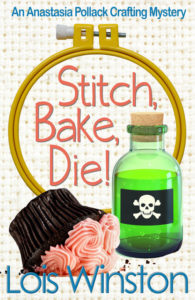 Stitch, Bake, Die!
Stitch, Bake, Die!
An Anastasia Pollack Crafting Mystery, Book 10
With massive debt, a communist mother-in-law, a Shakespeare-quoting parrot, and a photojournalist boyfriend who may or may not be a spy, crafts editor Anastasia Pollack already juggles too much in her life. So she’s not thrilled when her magazine volunteers her to present workshops and judge a needlework contest at the inaugural conference of the NJ chapter of the Stitch and Bake Society, a national organization of retired professional women. At least her best friend and cooking editor Cloris McWerther has also been roped into similar duties for the culinary side of the 3-day event taking place on the grounds of the exclusive Beckwith Chateau Country Club.
The sweet little old ladies Anastasia is expecting to find are definitely old, and some of them are little, but all are anything but sweet. She’s stepped into a vipers’ den that starts with bribery and ends with murder. When an ice storm forces Anastasia and Cloris to spend the night at the Chateau, Anastasia discovers evidence of insurance scams, medical fraud, an opioid ring, long-buried family secrets, and a bevy of suspects.
Can she piece together the various clues before she becomes the killer’s next target?
Buy Links– https://books2read.com/u/bwarEa
The post Guest Blogger: Lois Winston – The Non-conforming Tropist appeared first on Debra H. Goldstein.
September 13, 2021
WRITING RACE
 WRITING RACE by Laurel S. Peterson
WRITING RACE by Laurel S. Peterson
First of all, thanks, Debra, for having me on It’s Not Always a Mystery. I’m delighted to be here and to share some thoughts today on writing race. My mystery novel series, Shadow Notes and The Fallen (Woodhall Press), features a white amateur detective protagonist, Clara, who falls in love with her town’s black police chief, Kyle. As I tell my creative writing students, every choice is deliberate, and as a white writer, including a prominent black character was important to me.
We’ve all heard that we should write what we know. I know virtually nothing about what it means to be black in this country, other than what I hear, read, or observe. The first time I was confronted with my whiteness was when I gave a workshop at an all-black bank in Harlem. I was the only white woman in the room, and I realized how ignorant I was. What would it be like to step into that world? For me, writing a black character is about the need to understand.
Clara lives in Fairfield County, Connecticut, one of the wealthiest in the nation. Her inherited wealth has insulated her from racial issues. As well, she spent the last fifteen years in Europe, and only came home because she had a psychic dream predicting her mother was in danger. Kyle is about the only black person in 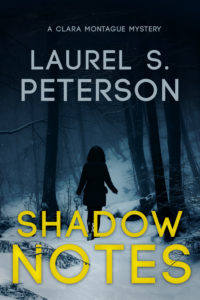 her town, so she doesn’t have to confront his difference because whiteness functions as the norm. However, others demand that she face it: her best friend Bailey, who suggests that Kyle’s culture might be different from hers; and then, Kyle’s family in New Orleans, who is shocked that she’s white. While they are welcoming, she must prove her worth by helping to catch the killer who threatens Kyle.
her town, so she doesn’t have to confront his difference because whiteness functions as the norm. However, others demand that she face it: her best friend Bailey, who suggests that Kyle’s culture might be different from hers; and then, Kyle’s family in New Orleans, who is shocked that she’s white. While they are welcoming, she must prove her worth by helping to catch the killer who threatens Kyle.
So why take this challenge on? When I mentioned what I was doing to a group of students at the community college where I teach, one girl asked, “What makes you think you know [about the black experience]?” I said I didn’t know but wanted to find out and to understand. Writing was my way of doing that.
Observation and listening help—especially listening to students of color and people in my community, but also to writers who are tackling race issues, including Claudia Rankine’s Citizen and Just Us, Ta-Nehisi Coates’ Between the World and Me, and Danez Smith’s Homie. I’ve long read poets, including Audre Lorde, Tracy K. Smith, Gwendolyn Brooks, and Lucille Clifton. These provocative voices force their readers to rethink the space they take in the world.
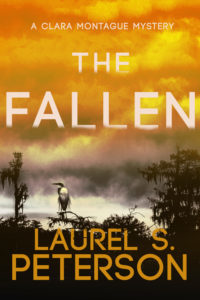 The profoundly imaginative work of writing gives me the opportunity to explore those challenges on the page and hopefully opens me to experiences that make me more sensitive to the challenges of others. How about you? What’s your take on writing characters of other cultures and races? I would love to hear your thoughts.
The profoundly imaginative work of writing gives me the opportunity to explore those challenges on the page and hopefully opens me to experiences that make me more sensitive to the challenges of others. How about you? What’s your take on writing characters of other cultures and races? I would love to hear your thoughts.
Find me at https://laurelpeterson.com/; on Twitter and Instagram: @laurelwriter49 and on Facebook: @LaurelPetersonwriter. Thanks so much for dropping by.
My books are available on Amazon: Shadow Notes (book #1) and The Fallen (book #2).
The post WRITING RACE appeared first on Debra H. Goldstein.
August 29, 2021
Guest Blogger: Kassandra Lamb – When to End a Series
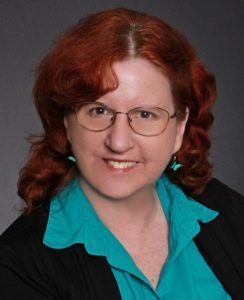 When to End a Series by Kassandra Lamb
When to End a Series by Kassandra Lamb
For the second time in my writing career, I’m facing the decision of when to end a series. It’s a bittersweet experience. An author’s characters feel very much like real people to us.
It’s always tough to decide just when and where to end things. The why, however, is usually a combination of running out of story ideas for the series’ characters, and/or the main character(s) have completed something we authors call a character arc. Just like in real life, characters should ideally grow and change, learn about themselves, heal old wounds and become emotionally stronger as a result.
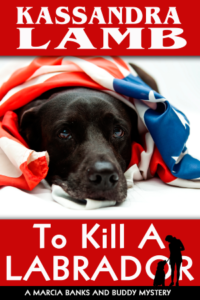 In the case of my current protagonist, service dog trainer Marcia Banks started out with a significant neurosis regarding commitment, as a result of a short and disastrous marriage. In Book 1, To Kill A Labrador (no dogs die), she meets an attractive local sheriff and finds certain feelings and sensations stirring. For the rest of the series, an ongoing subplot is her struggle to overcome her phobia—a struggle that produces both serious and humorous moments. Initially, she stutters a lot when she tries to say words like “love” and “marriage,” and especially “ch-ch-children.”
In the case of my current protagonist, service dog trainer Marcia Banks started out with a significant neurosis regarding commitment, as a result of a short and disastrous marriage. In Book 1, To Kill A Labrador (no dogs die), she meets an attractive local sheriff and finds certain feelings and sensations stirring. For the rest of the series, an ongoing subplot is her struggle to overcome her phobia—a struggle that produces both serious and humorous moments. Initially, she stutters a lot when she tries to say words like “love” and “marriage,” and especially “ch-ch-children.”
Marcia also has a tendency to be snarky, which she tries to control by thinking of her snarky side as a separate persona—whom she dubs Ms. Snark somewhere around Book 3. Her goal is to keep Ms. Snark in check and only allow her to make her snarky comments inside her own head. This backfires a bit as Ms. Snark subjects her to a running commentary on her life.
And of course, what leads her into her sleuthing activities is her tendency to rush in to right wrongs. This is both her greatest strength and her biggest flaw, because she doesn’t always think through the risks. She can’t help herself. When she sees something going wrong in someone’s life—whether it be a friend, neighbor or one of her veteran clients for whom she trains the dogs—she has to try to set it right.
She’s gotten a little better in this area over the course of the series, but still has a few lessons to learn about consequences, which will be dealt with in the last full-length novel in the series, To Bark or Not to Bark (not written yet).
Then the arc will be completed and the series will have come to its natural end. Marcia’s other issues either came to a head or were moving toward resolution in Book 11, One Flew over the Chow-Chow’s Nest, which just came out this summer.
So it’s time for me to prepare myself for the bittersweet departure of Marcia and her entourage of supporting characters (some of them four-legged) from my life. It feels much like having a neighbor, who’s been a good friend as well, announce that they’re moving across the country. You want to wish them well, but it’s hard to let go, and you know you’ll really miss them.
But the sweet part of the bittersweet is the feeling of accomplishment. I’ve successfully pulled off that character arc over the course of 12 books! That’s particularly gratifying to me because I’m a pantser…I write by the seat of my pants. So I never quite know exactly where my muse will take me and my characters, and I’m quite relieved when they end up in a good place.
That makes it easier to decide when to end a series, and to let go, knowing that I’ve helped someone become a better, happier person, even if she is a figment of my imagination. 
~ ~ ~ ~ ~
In her youth, Kassandra Lamb had two great passions—psychology and writing. Advised that writers need day jobs—and being partial to eating—she studied psychology. Her career as a psychotherapist and college professor taught her much about the dark side of human nature, but also much about resilience, perseverance, and the healing power of laughter. Now retired, she spends most of her time in an alternate universe populated by her fictional characters. The portal to this universe (aka her computer) is located in North Central Florida where her husband and dog catch occasional glimpses of her.
WEBSITE: https://kassandralamb.com
TWITTER: https://twitter.com/KassandraLamb
FACEBOOK: https://www.facebook.com/kassandralam...
PINTEREST: https://www.pinterest.com/kassandralamb/
INSTAGRAM: https://www.instagram.com/kasslamb/
BOOKBUB PROFILE: https://www.bookbub.com/profile/kassa...
AMAZON AUTHOR PAGE: http://www.amazon.com/Kassandra-Lamb/...
 One Flew Over the Chow-Chow’s Nest
One Flew Over the Chow-Chow’s Nest
As the world moves toward normal, service dog trainer Marcia Banks can finally schedule the human phase of training with her Air Force pilot client, only to discover he’s been in a psychiatric hospital for months, with no one allowed to visit. Then suddenly he’s discharged…and his private plane crashes two days later.
While investigating what happened, Marcia uncovers potential fraud against the Veterans’ Administration. But who’s behind it, and did they sabotage her client’s plane? And just how determined are they to silence Marcia?
AMAZON US: https://www.amazon.com/dp/B094SWRH25
APPLE US: https://books.apple.com/us/book/id156...
AMAZON: smarturl.it/ChowChowNest
APPLE: smarturl.it/AppleChowChow
KOBO: https://www.kobo.com/us/en/ebook/one-...
NOOK: https://www.barnesandnoble.com/w/one-...
GOOGLE PLAY: https://play.google.com/store/books/d...
The post Guest Blogger: Kassandra Lamb – When to End a Series appeared first on Debra H. Goldstein.
August 16, 2021
Poetry – Words of Beauty that I Simply Don’t Get
 Sometimes I wonder why I feel such a passion for the written word and yet, I don’t love poetry. I read poems and I often appreciate the beauty of the word choices, rhythm, and beat, but I don’t go out of my way to pick up poetry books like I do novels and short story anthologies.
Sometimes I wonder why I feel such a passion for the written word and yet, I don’t love poetry. I read poems and I often appreciate the beauty of the word choices, rhythm, and beat, but I don’t go out of my way to pick up poetry books like I do novels and short story anthologies.
One of the writing groups I belong to has a weekly write a fifty-words or less response to a picture prompt. Many of the winners craft their submissions in poetic terms. My piece is always a narrative paragraph or two. Even there, where I could work in some pretty imagery, I don’t. My analytical brain looks at the picture and translates it into very concrete terms.
In writing novels, I have had to teach myself that in the first draft I often fail to express the character’s inner thoughts and feelings. In second, third, and fourth revisions, I go back and add those things in. Occasionally now, I manage to slip tidbits into the first draft. But, I haven’t been able to teach myself to do the same thing to write a poem.
My poetry, like my contest submissions is never free form. It follows a rhyming and counted syllable pattern. The theme is always obvious rather than couched in pretty terms. For a person who loves the sound of words, I find my predicament ironic.
Do any of you share my problem with poetry?
The post Poetry – Words of Beauty that I Simply Don’t Get appeared first on Debra H. Goldstein.



